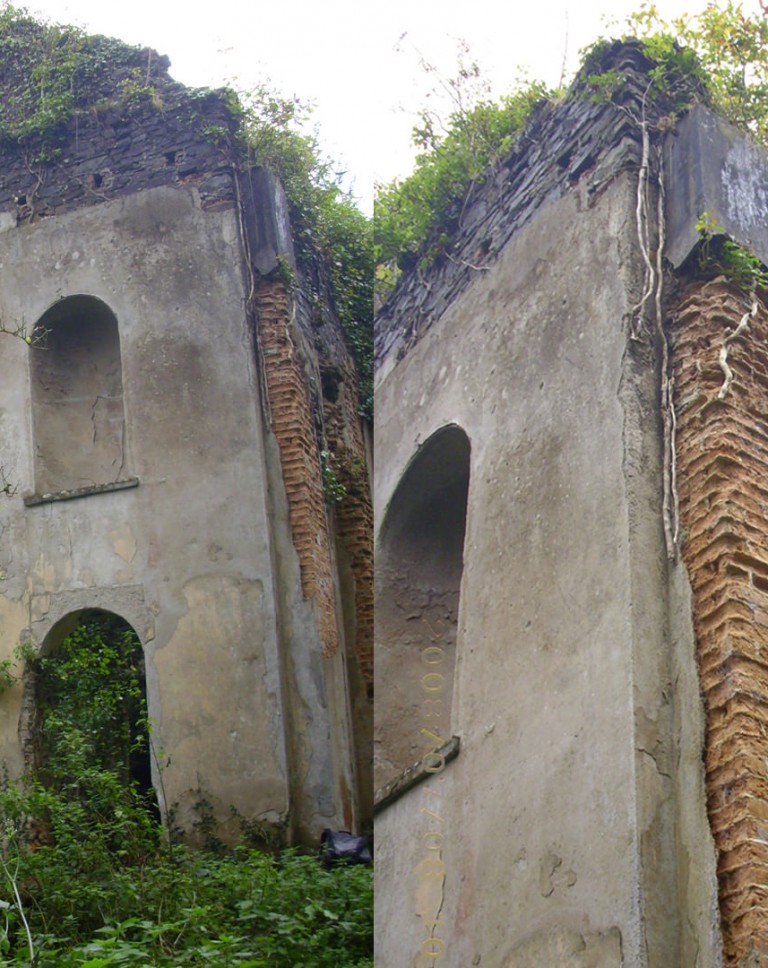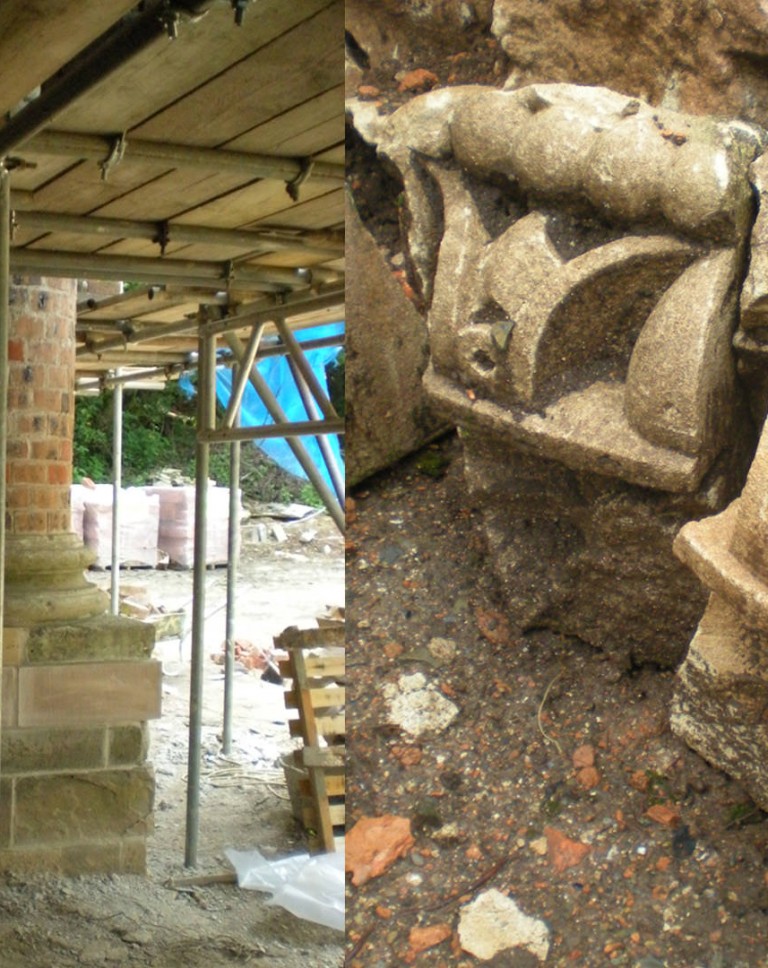Holwell Temple
Holwell Temple is one of a significant number of 18th century park buildings to survive at Castle Hill, a Grade I Listed parkland of outstanding national importance.
The Temple is Grade II Listed, built between 1769-1771 as banqueting house to commemorate Matthew, Earl of Fortescue, sits as one of the eye-catchers within the classical landscape designed at the same time as William Kent was working on the house.
Hugh 2nd Earl of Fortescue described the Temple "as one of most handsomest and best situated buildings" at Castle Hill in the English landscape style epitomised by the work of Lancelot Brown.
The Temple stands imposingly on the extremity of a bluff; originally the meadows below it were flooded to form "a sheet of water" and the trees around it shredded "to favour the deception of a port".
The inside was never completed and was converted in the late 19th century to workers cottages. Fire gutted the interior and destroyed the roof in 1902 and the condition of the ruin had deteriorated since.
The practice has worked alongside the Fortescue Estate, English Heritage and other consultants to establish the importance and condition of the Temple, identify options and impacts of repair and agree the most suitable long term strategy for the Temple’s survival, continued use and reinstatement of an integral part of a designed landscape.
The structural repairs included rebuilding of the columns and modern re-roofing to reflect the original form and massing of the Temple when viewed from a distance in the landscape. Timber cladding has been used to replicate proportions of cornice etc. providing a cost efficient visual reference to the original form whilst not precluding the future application of detail and ornamentation.
Download project card (864 KB pdf)




